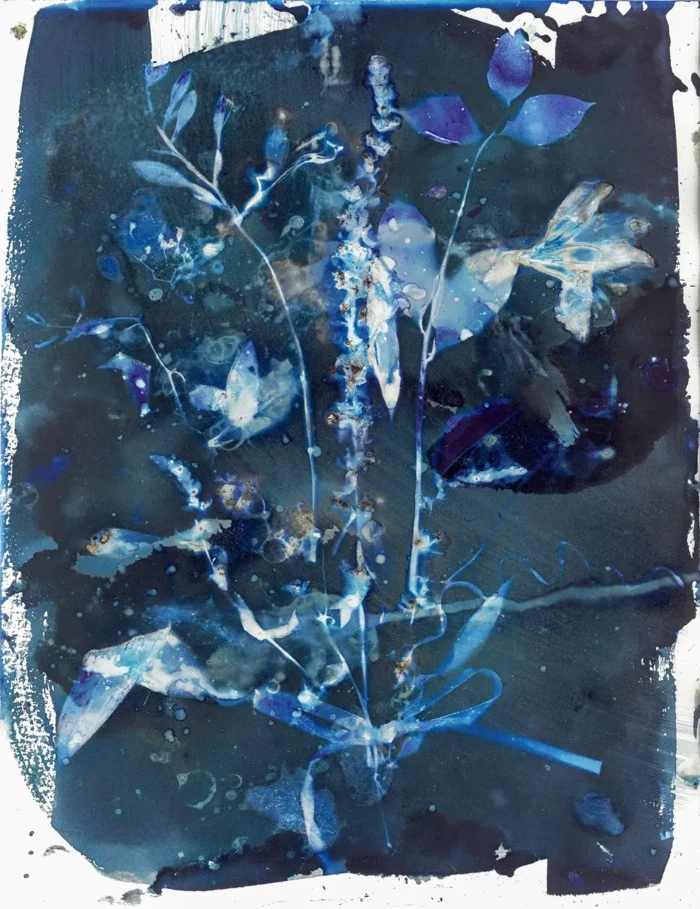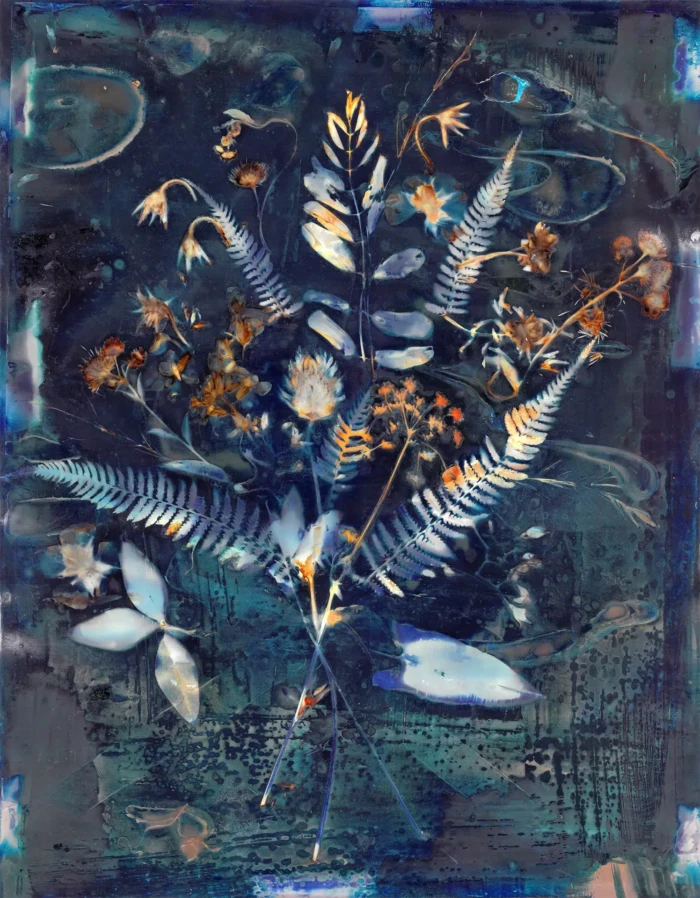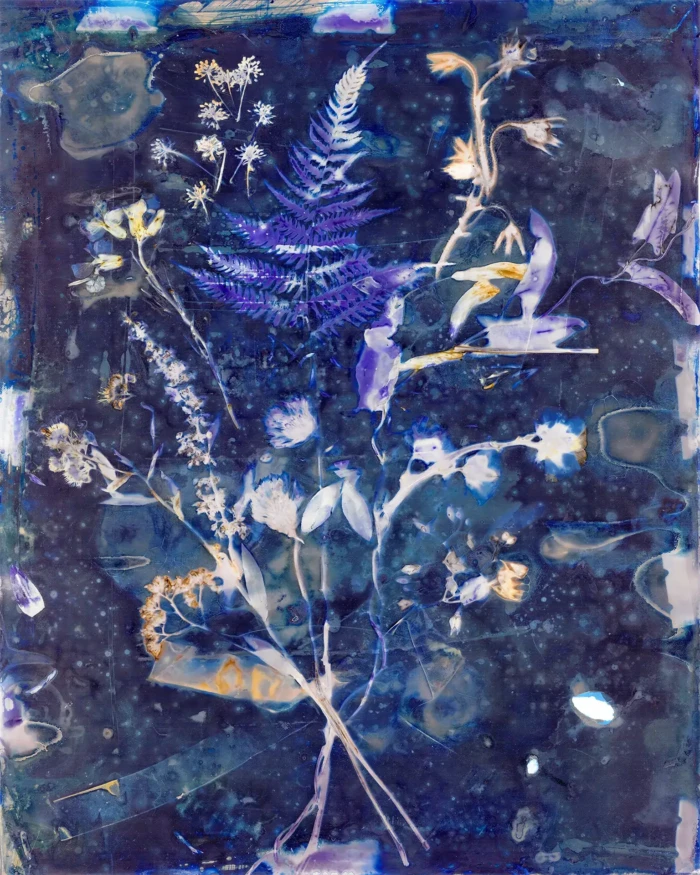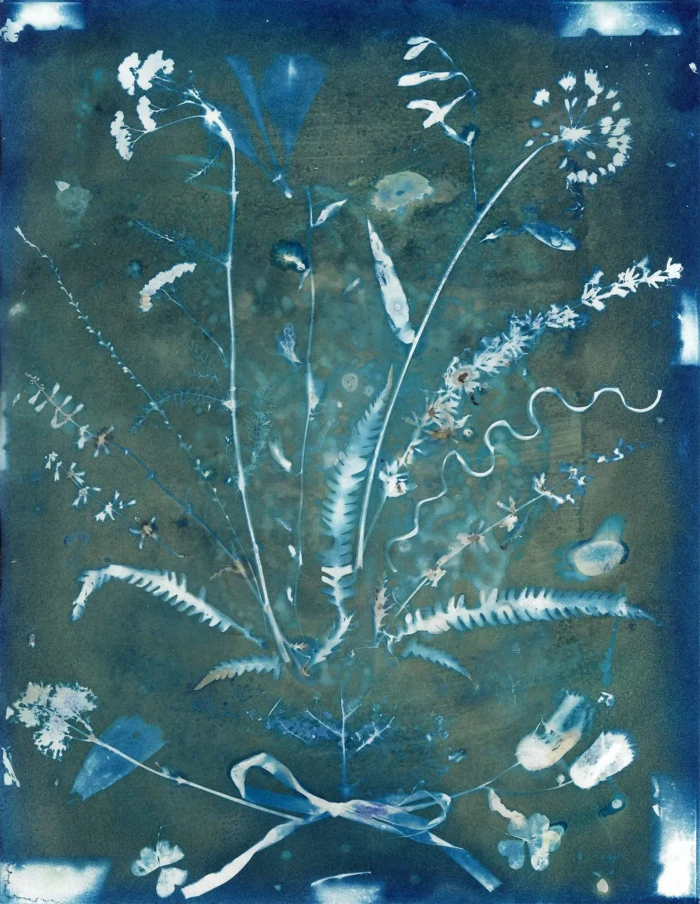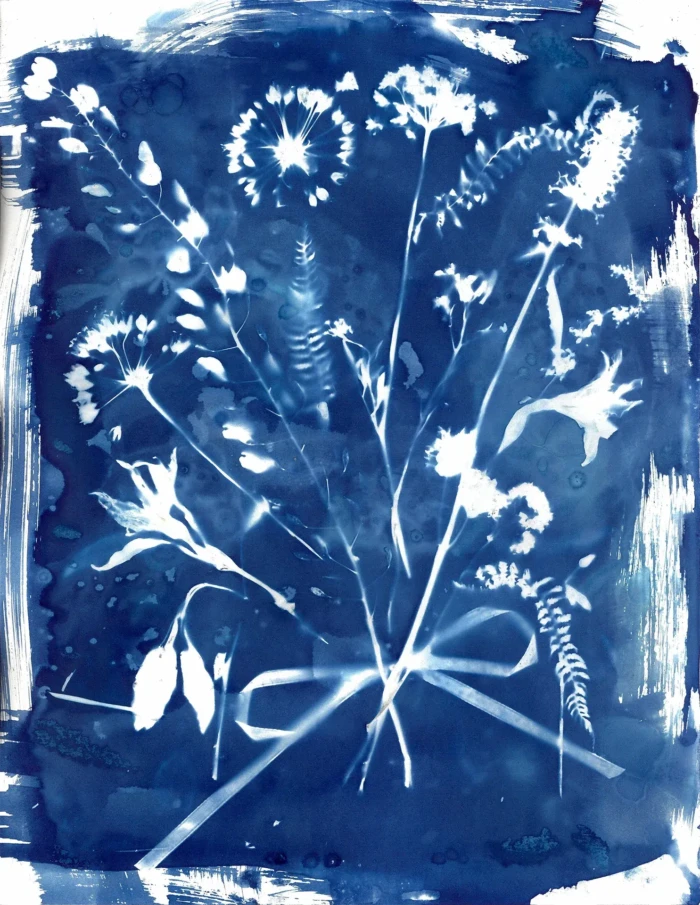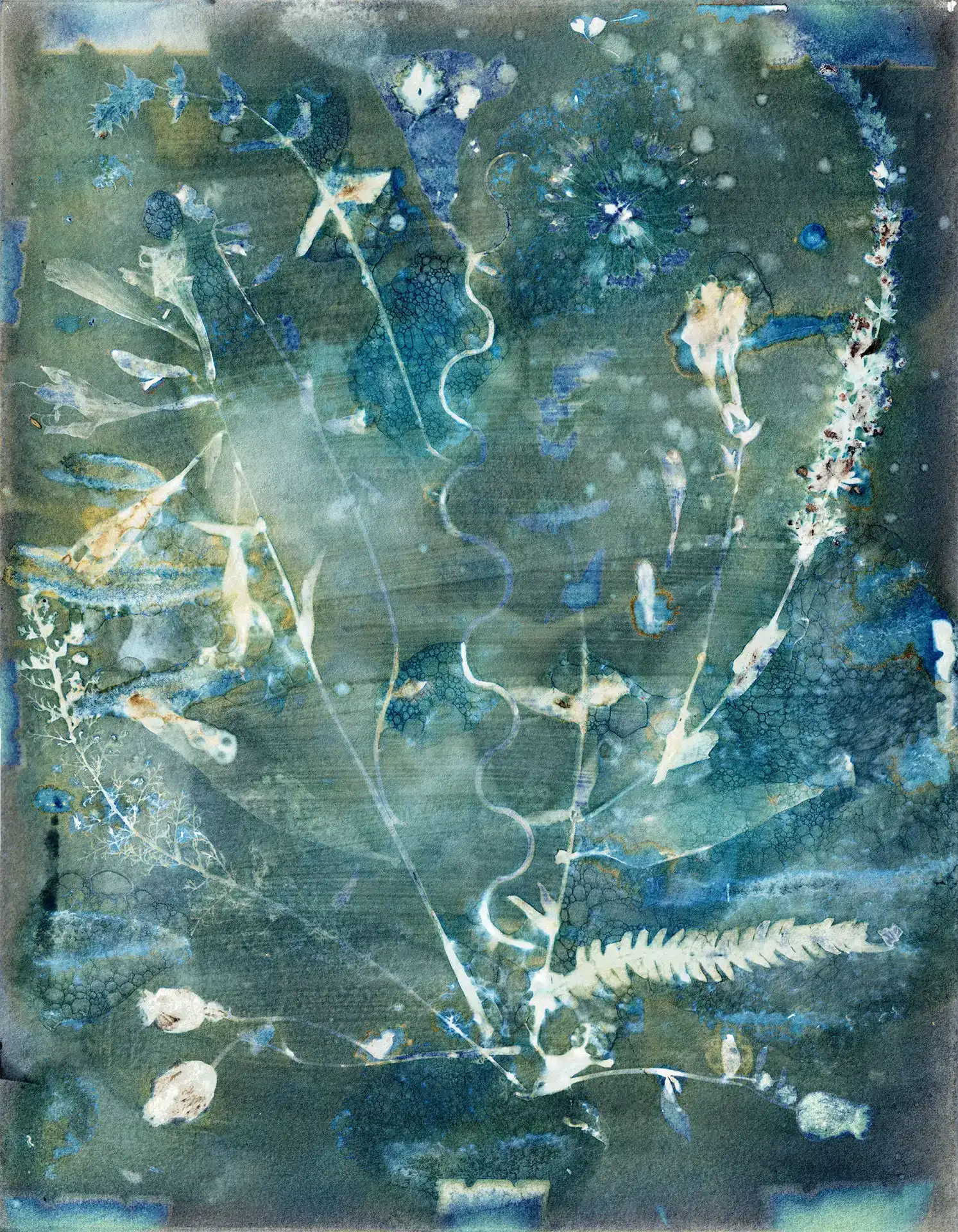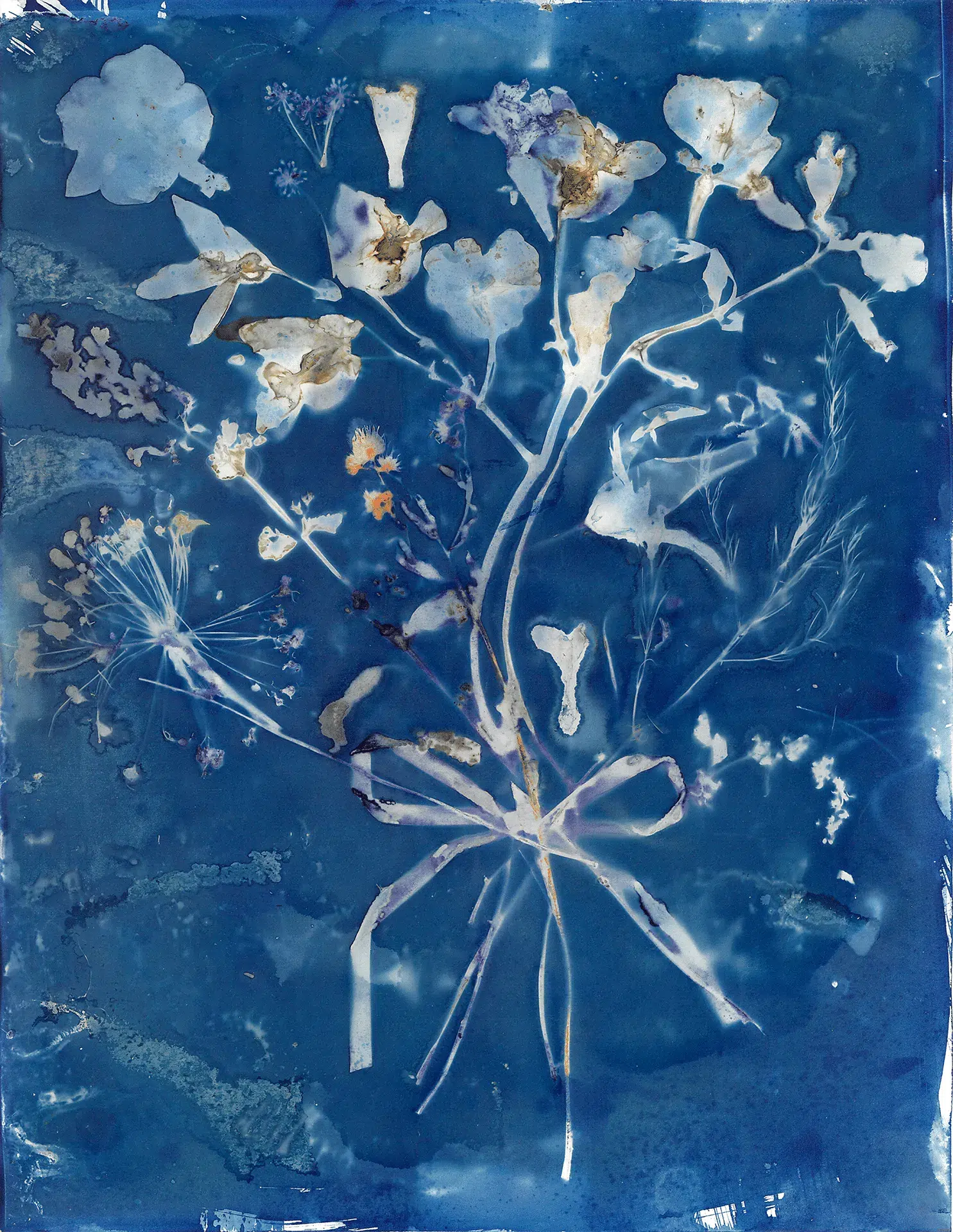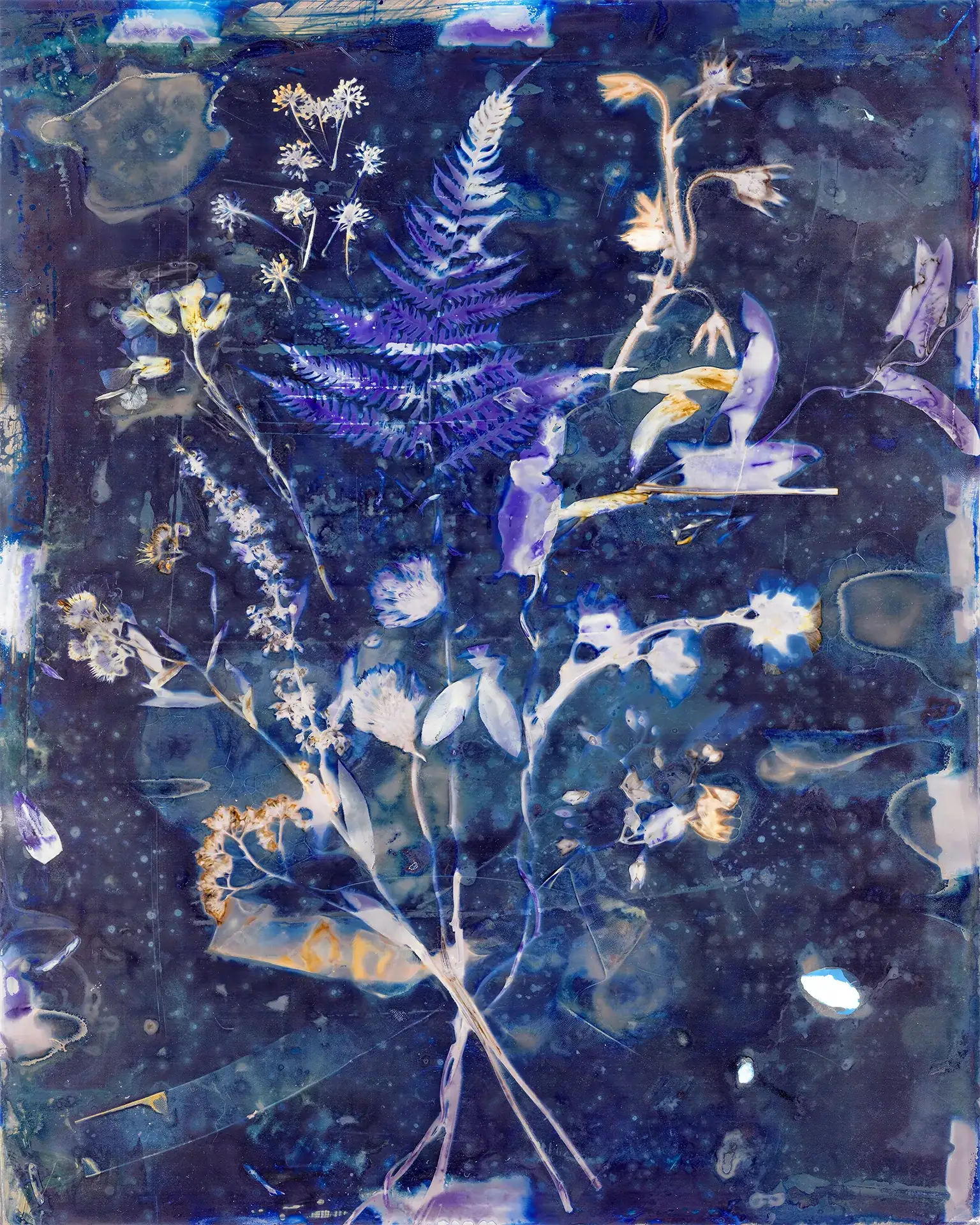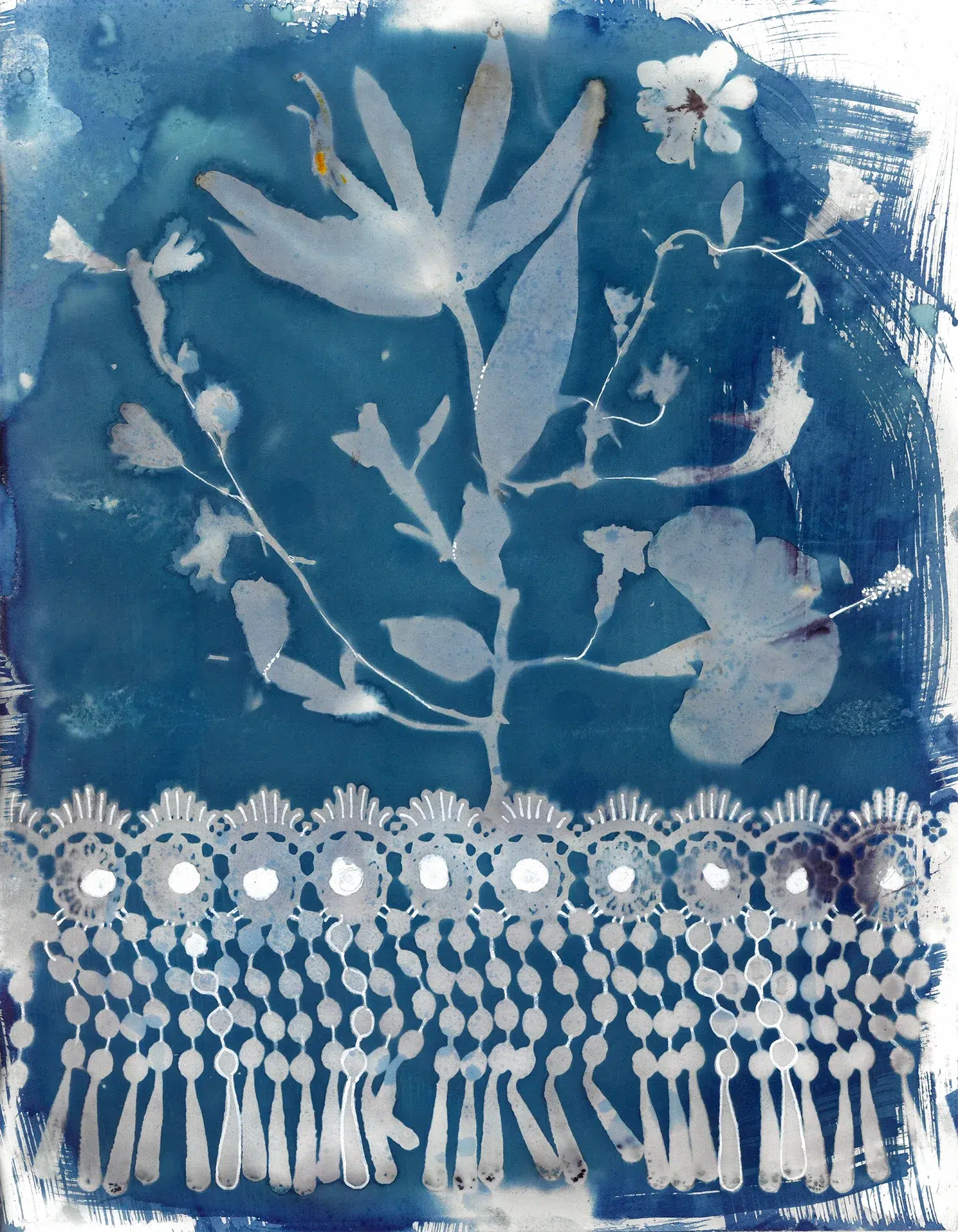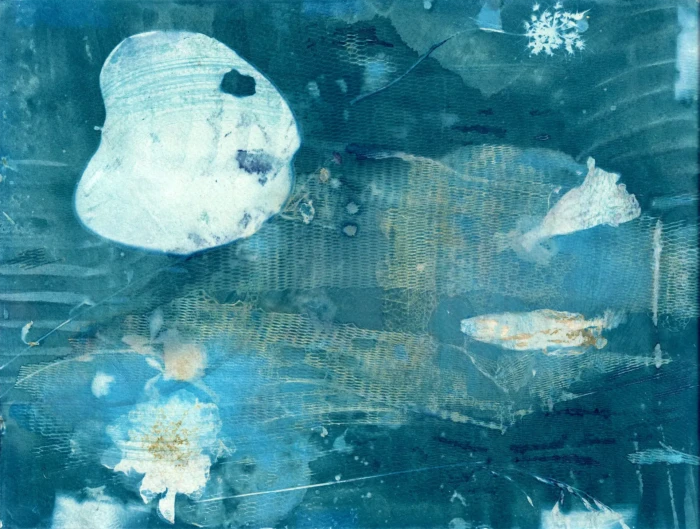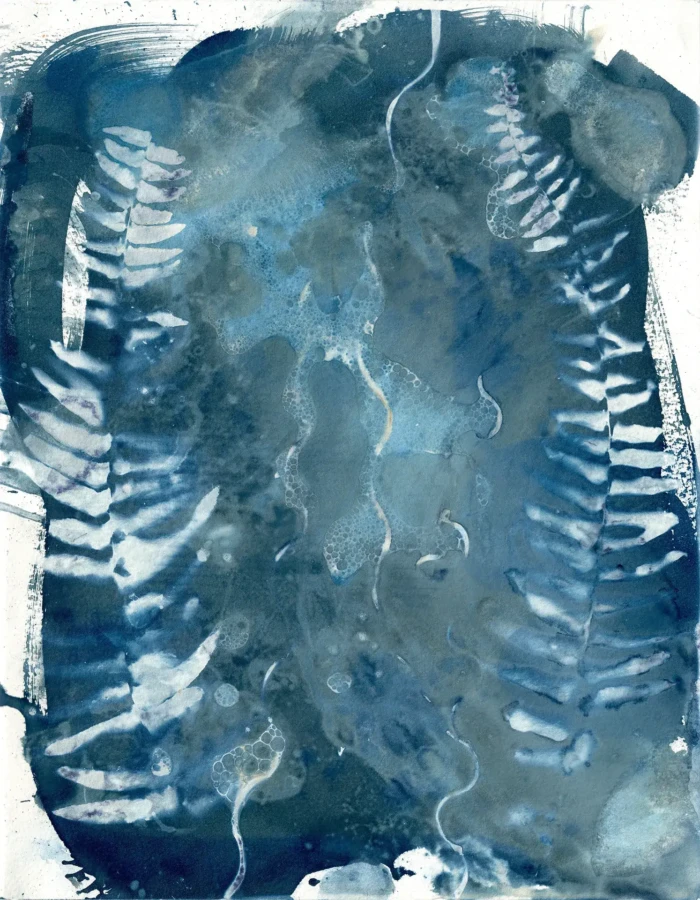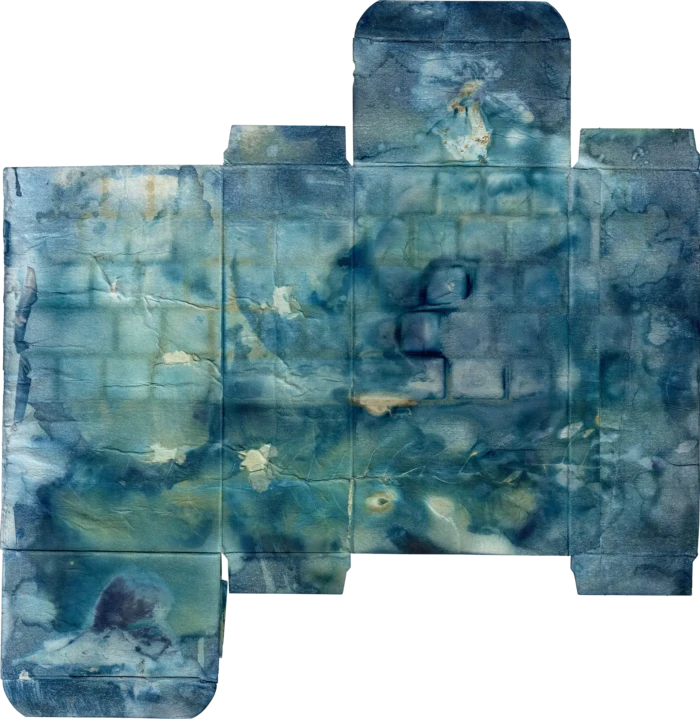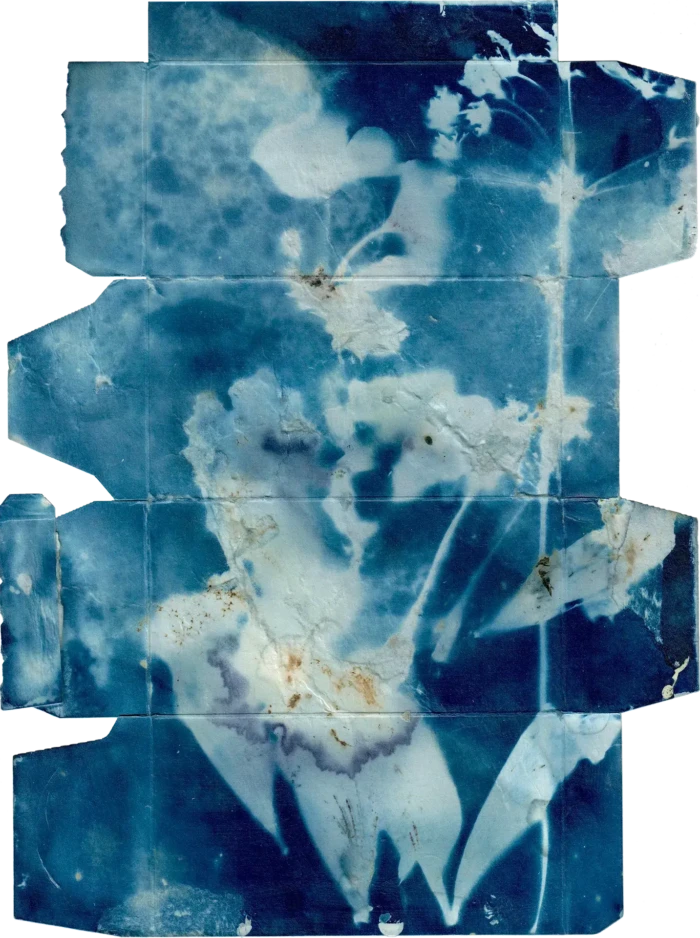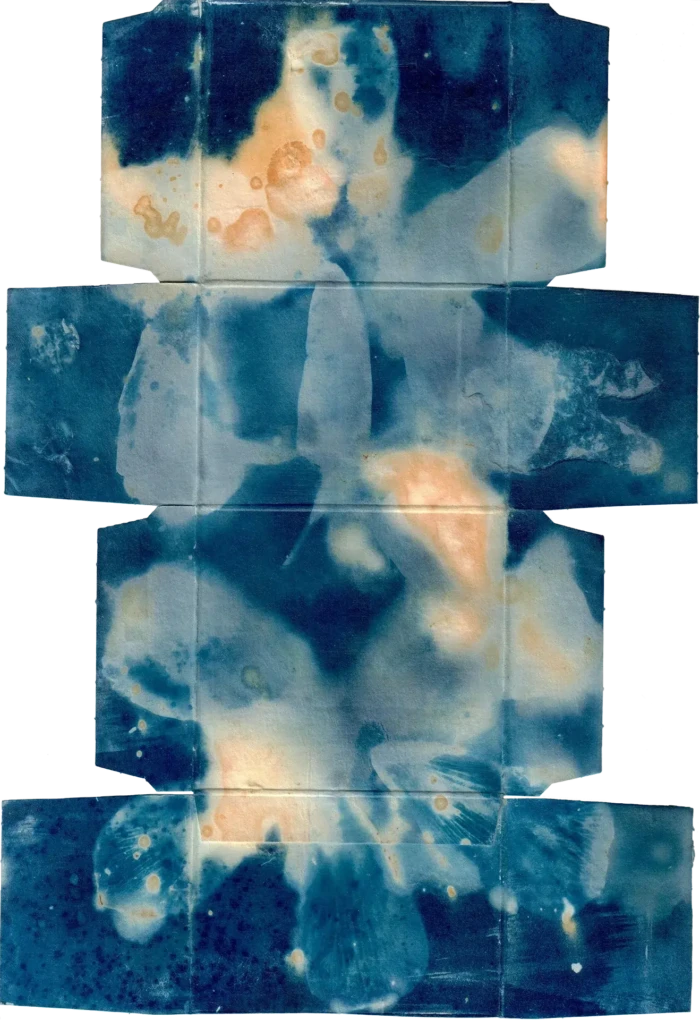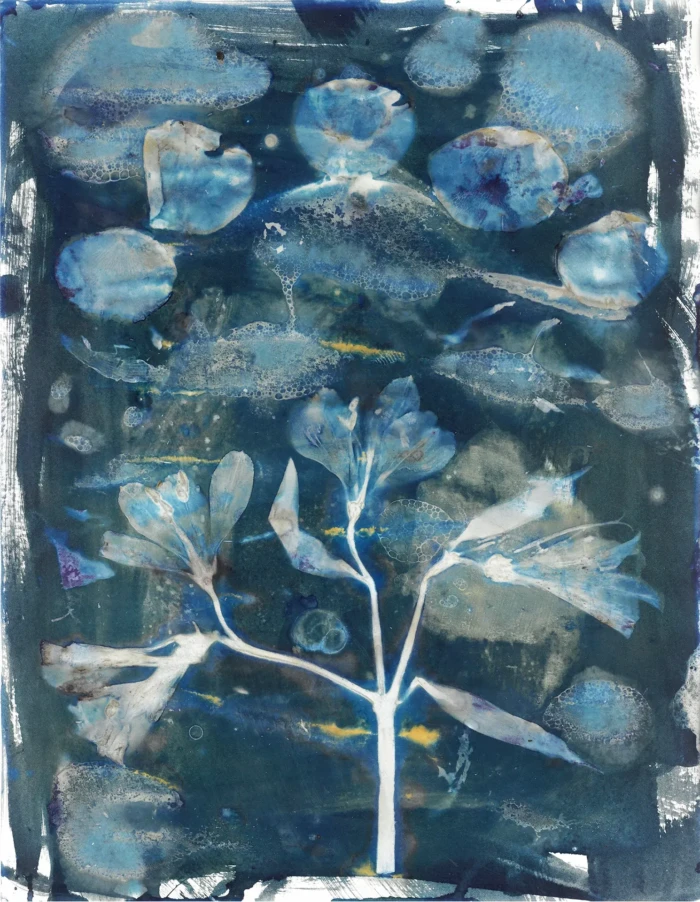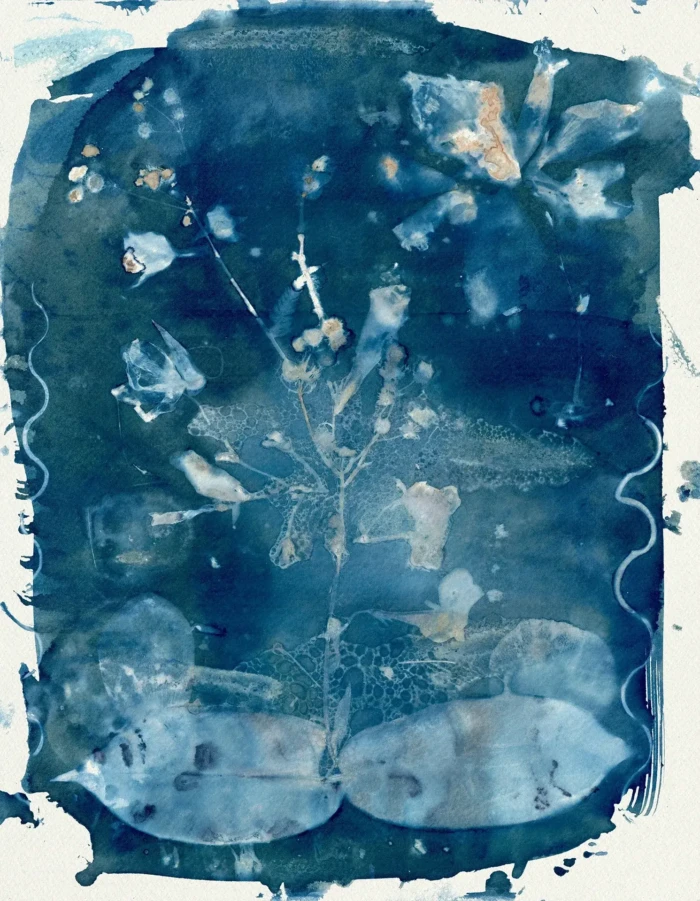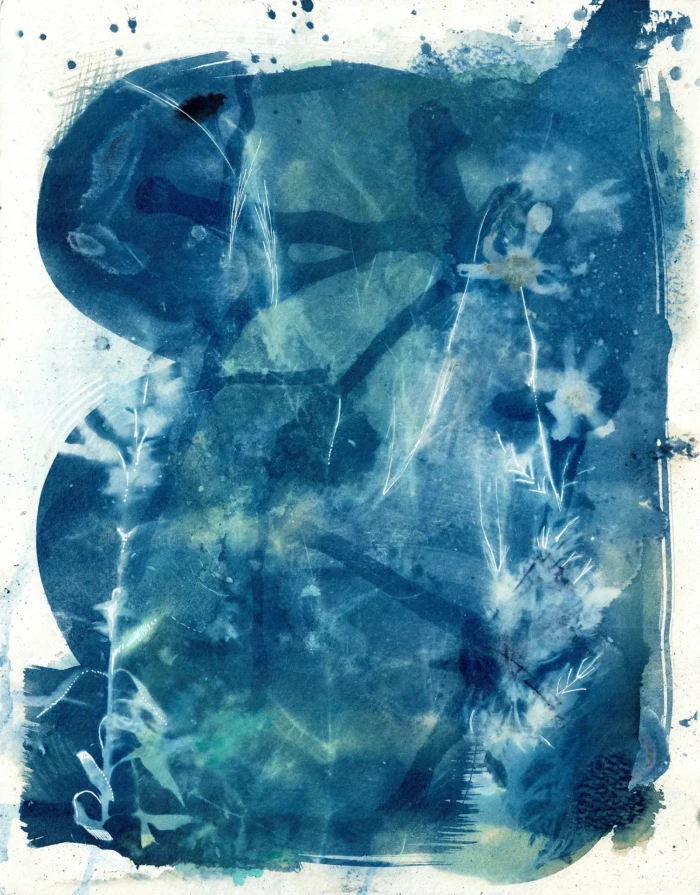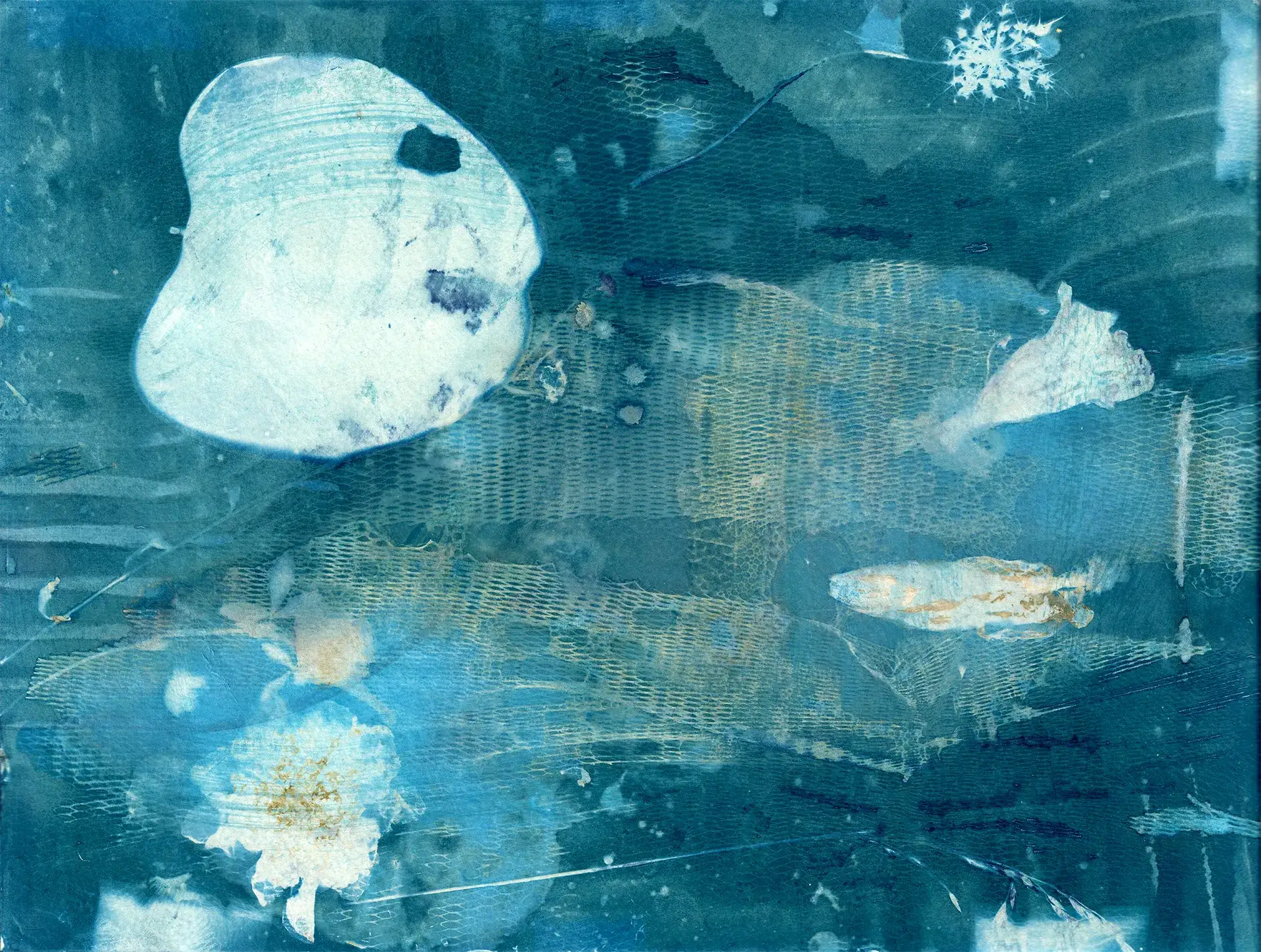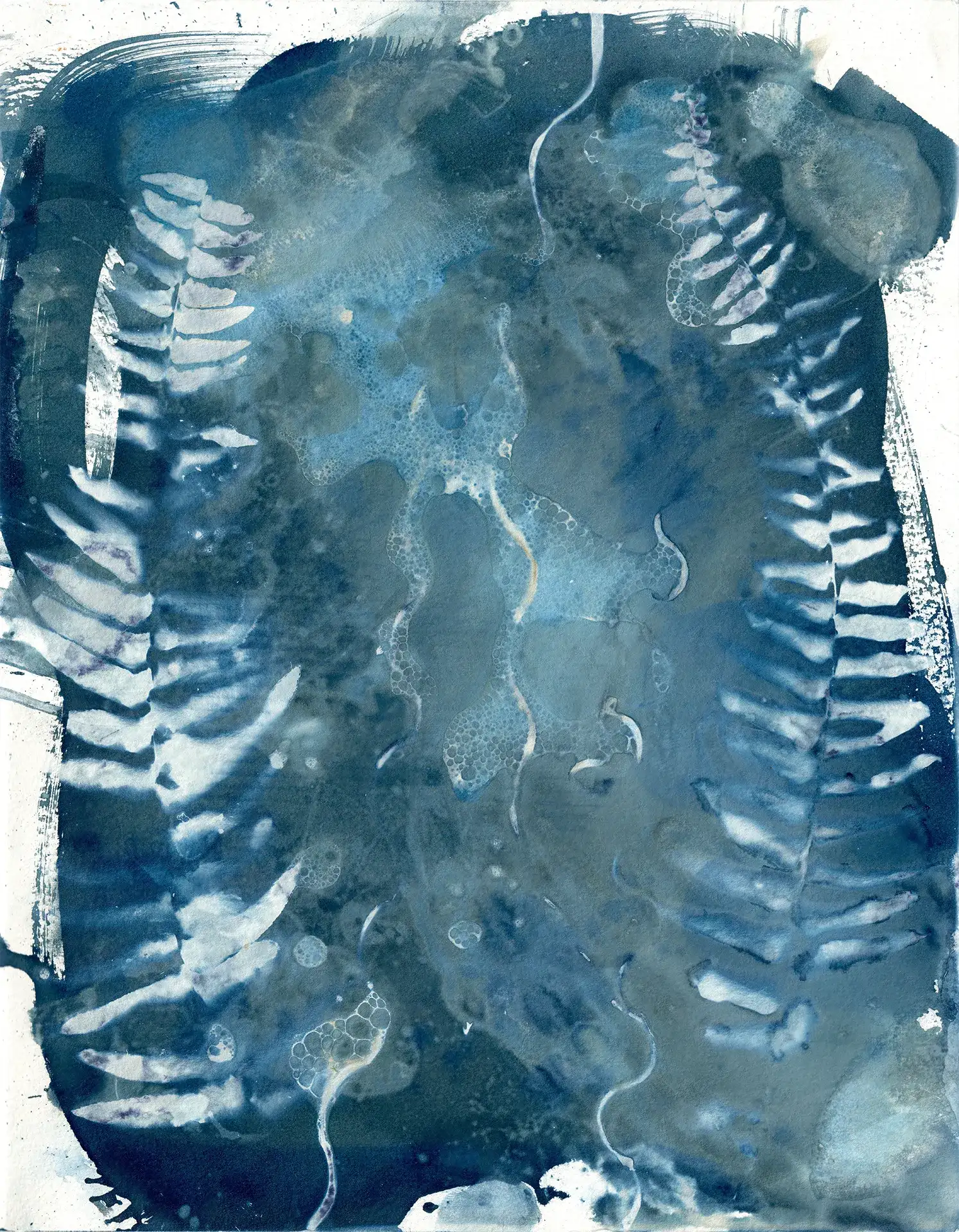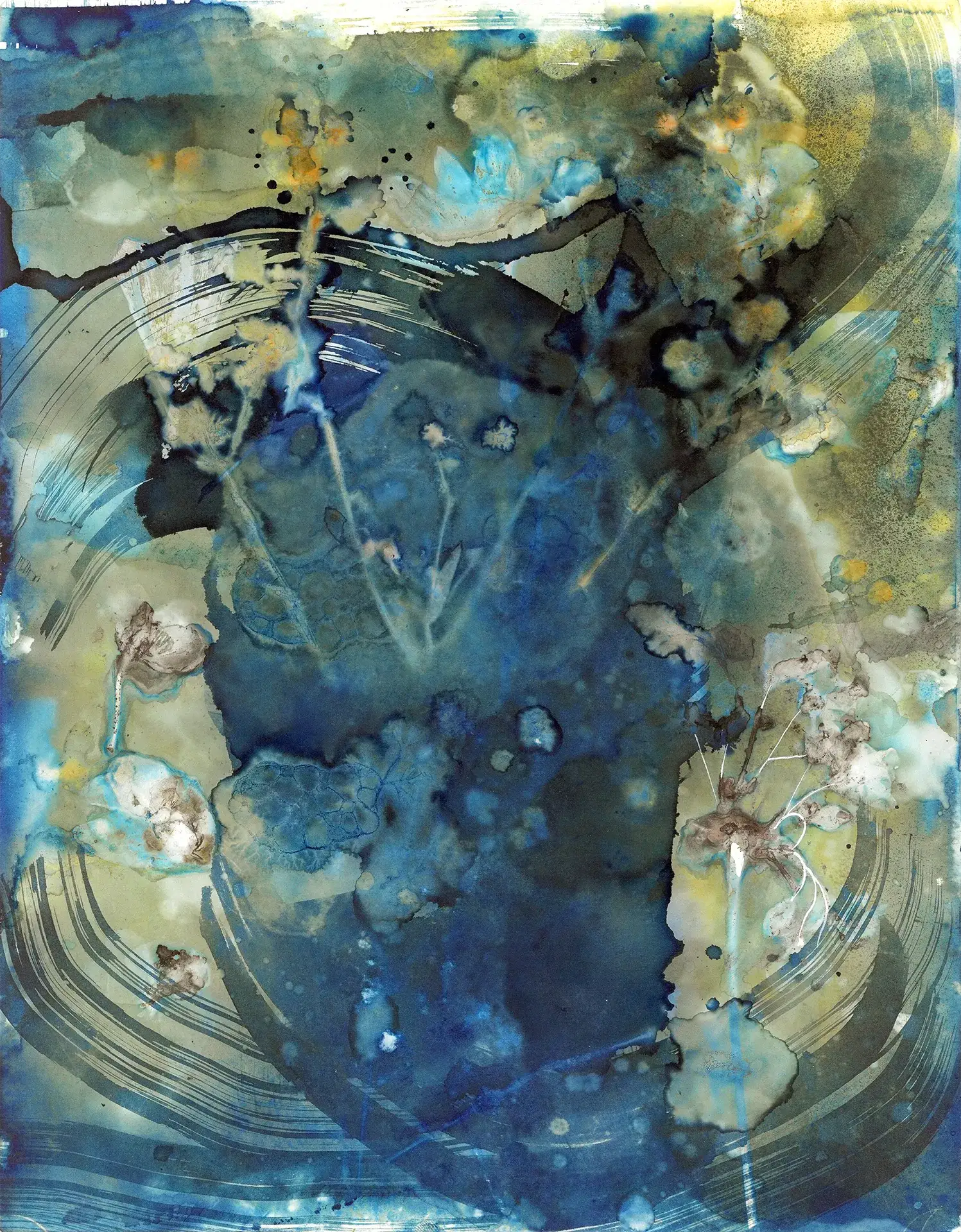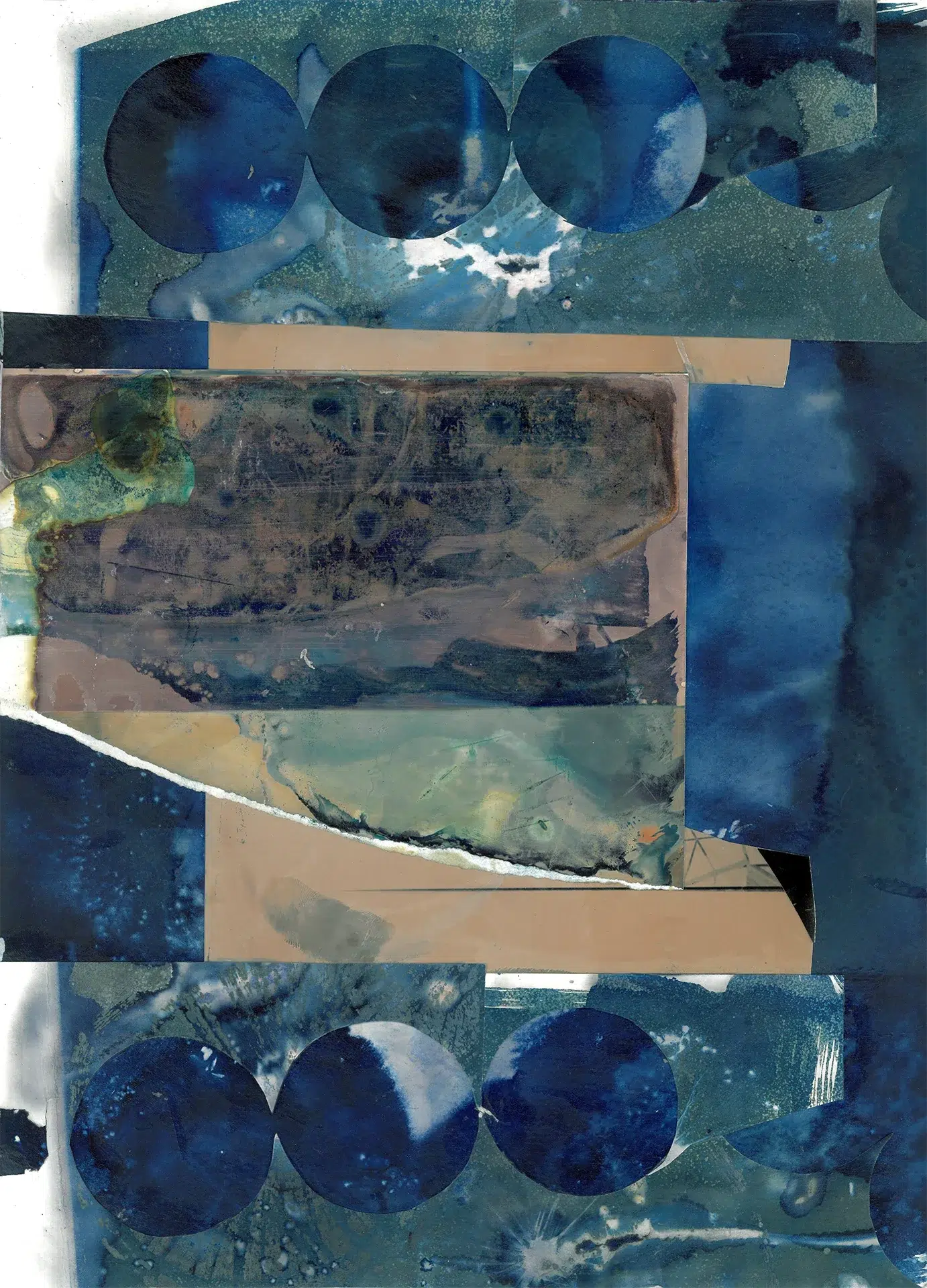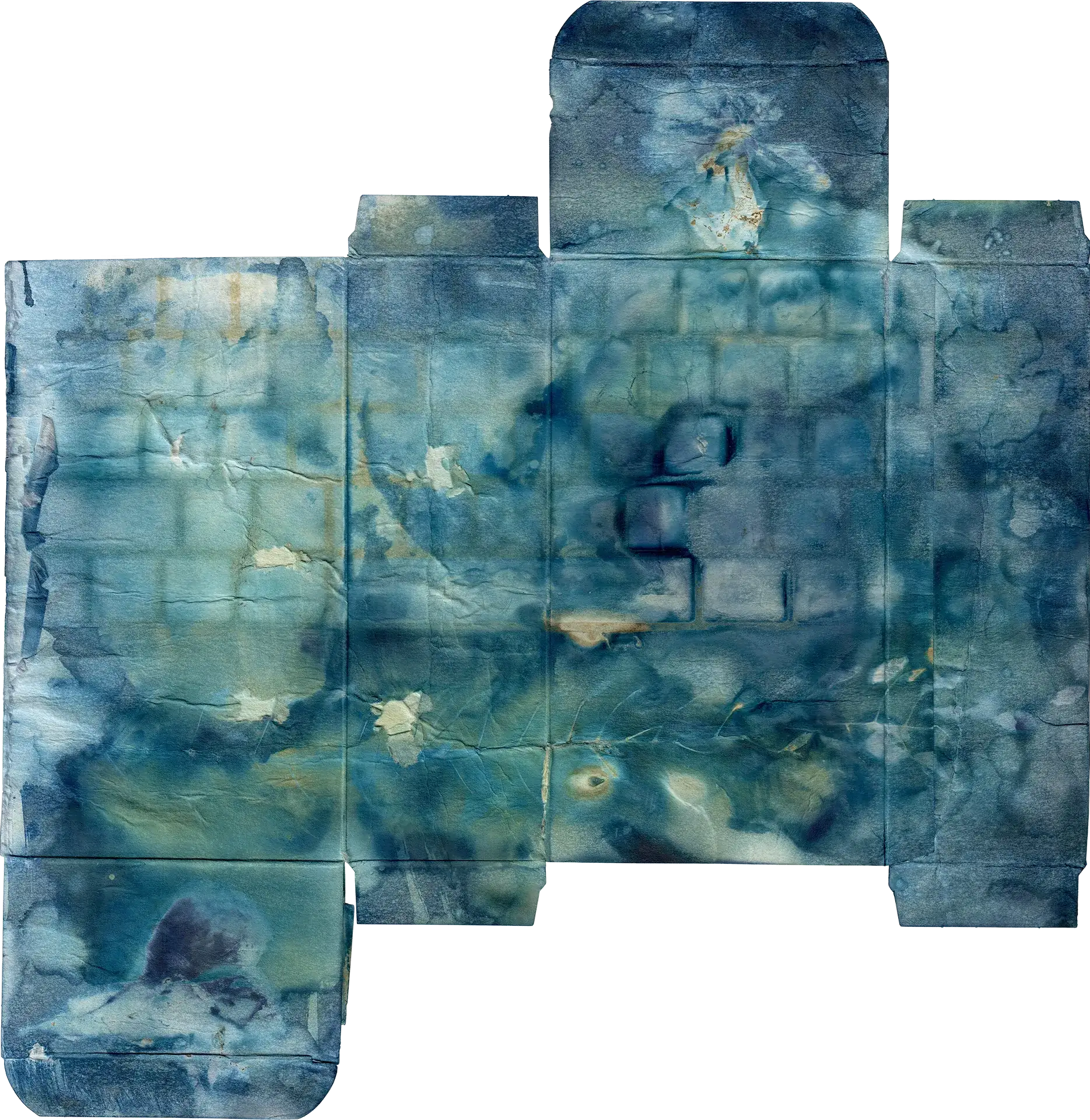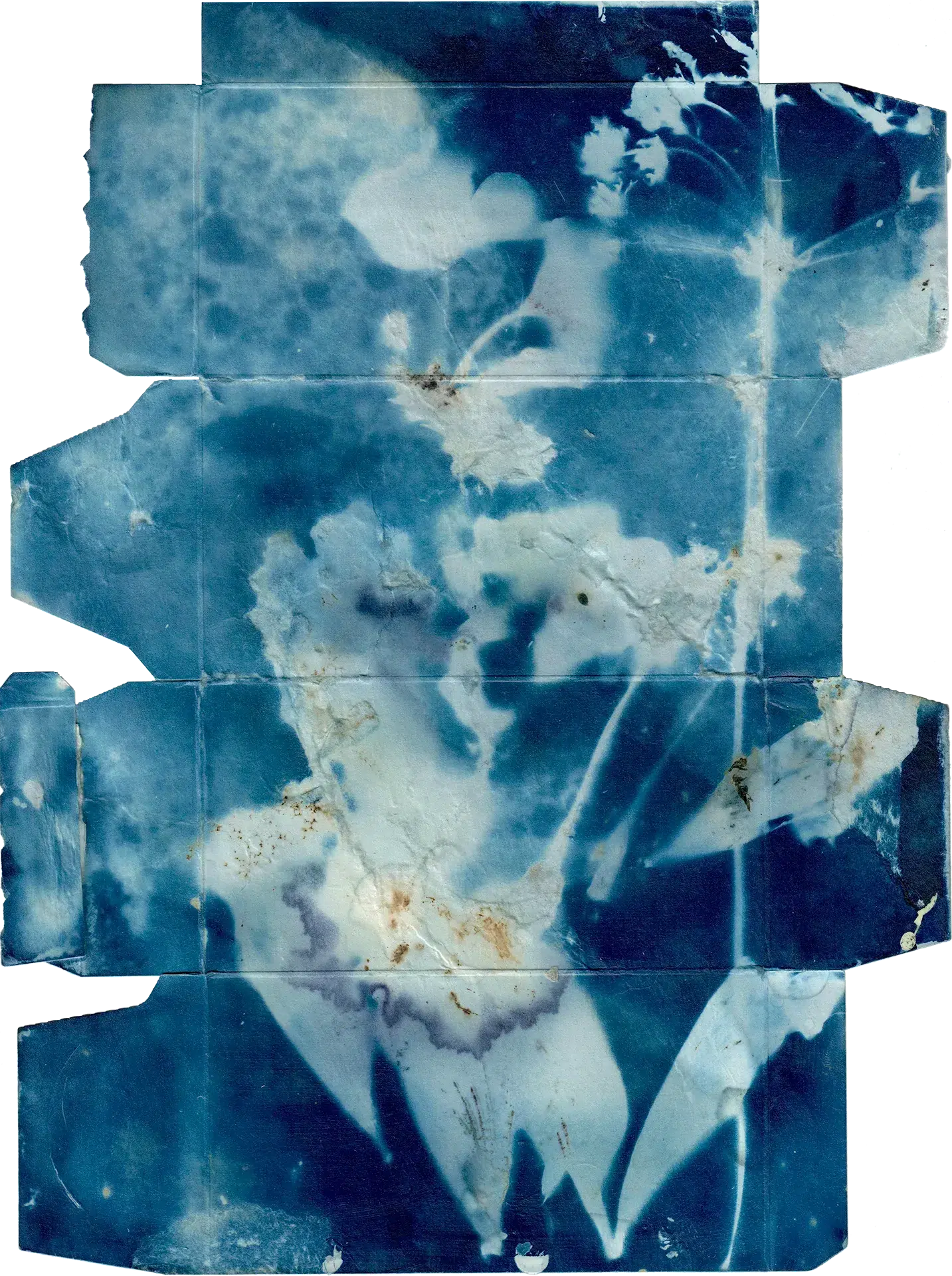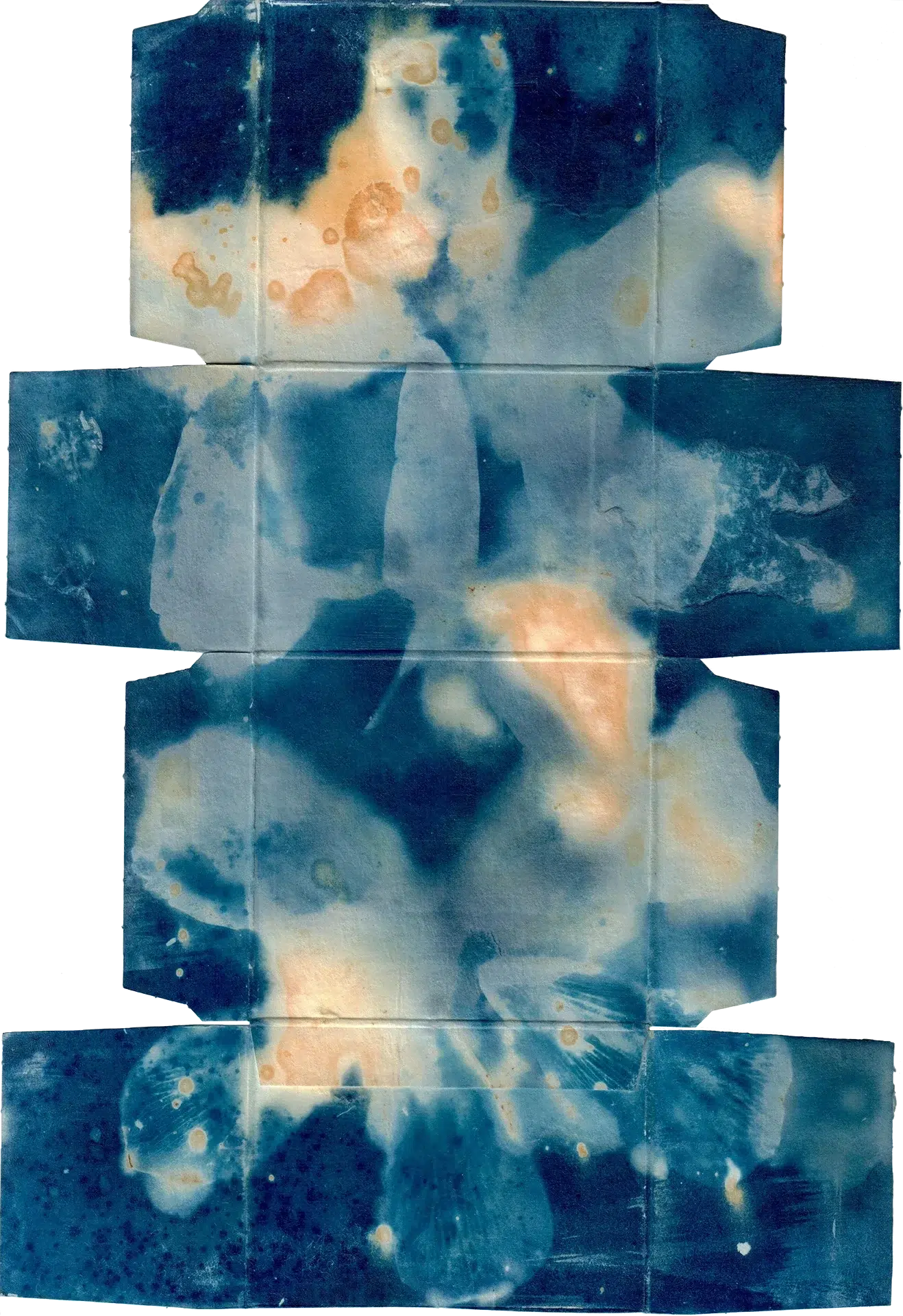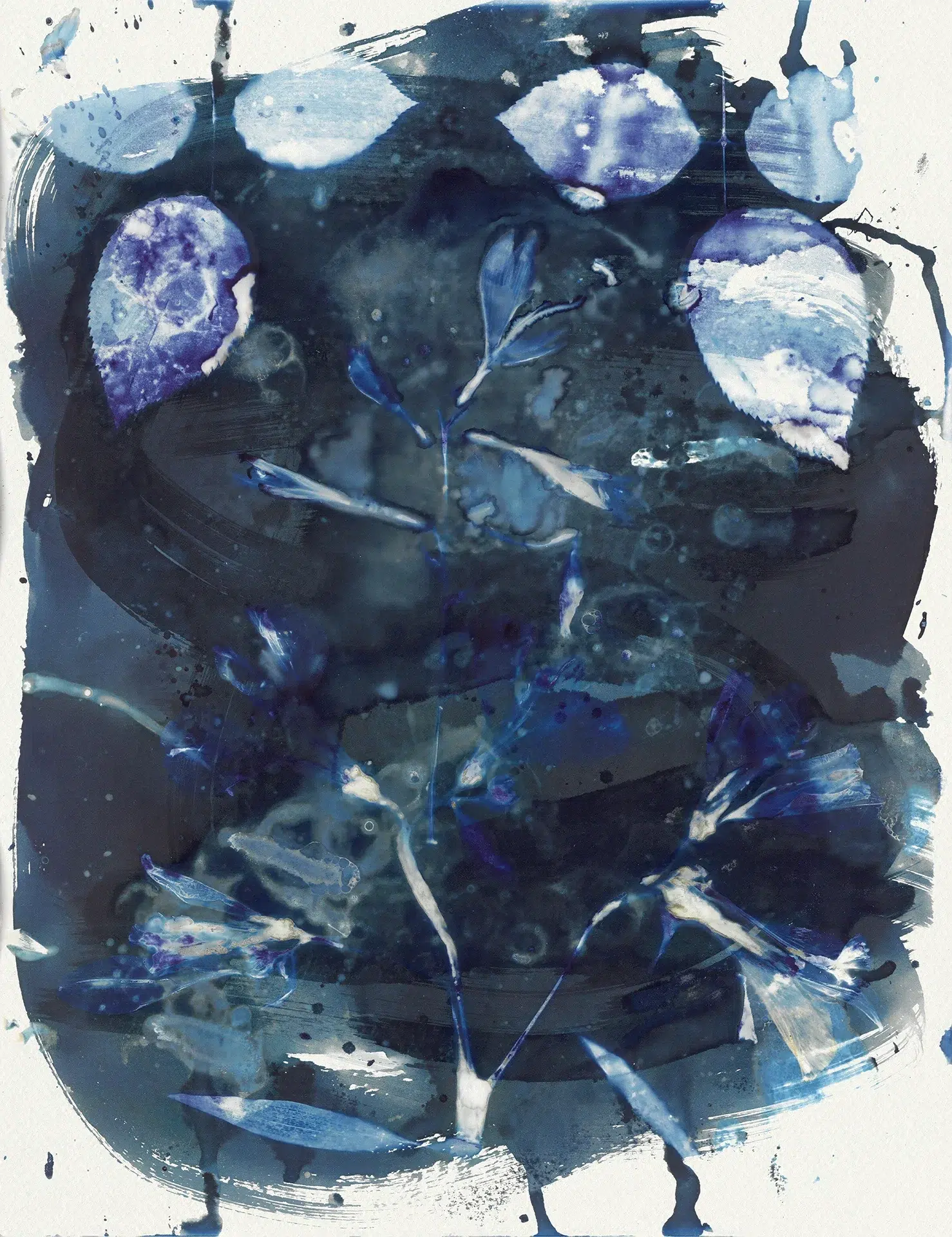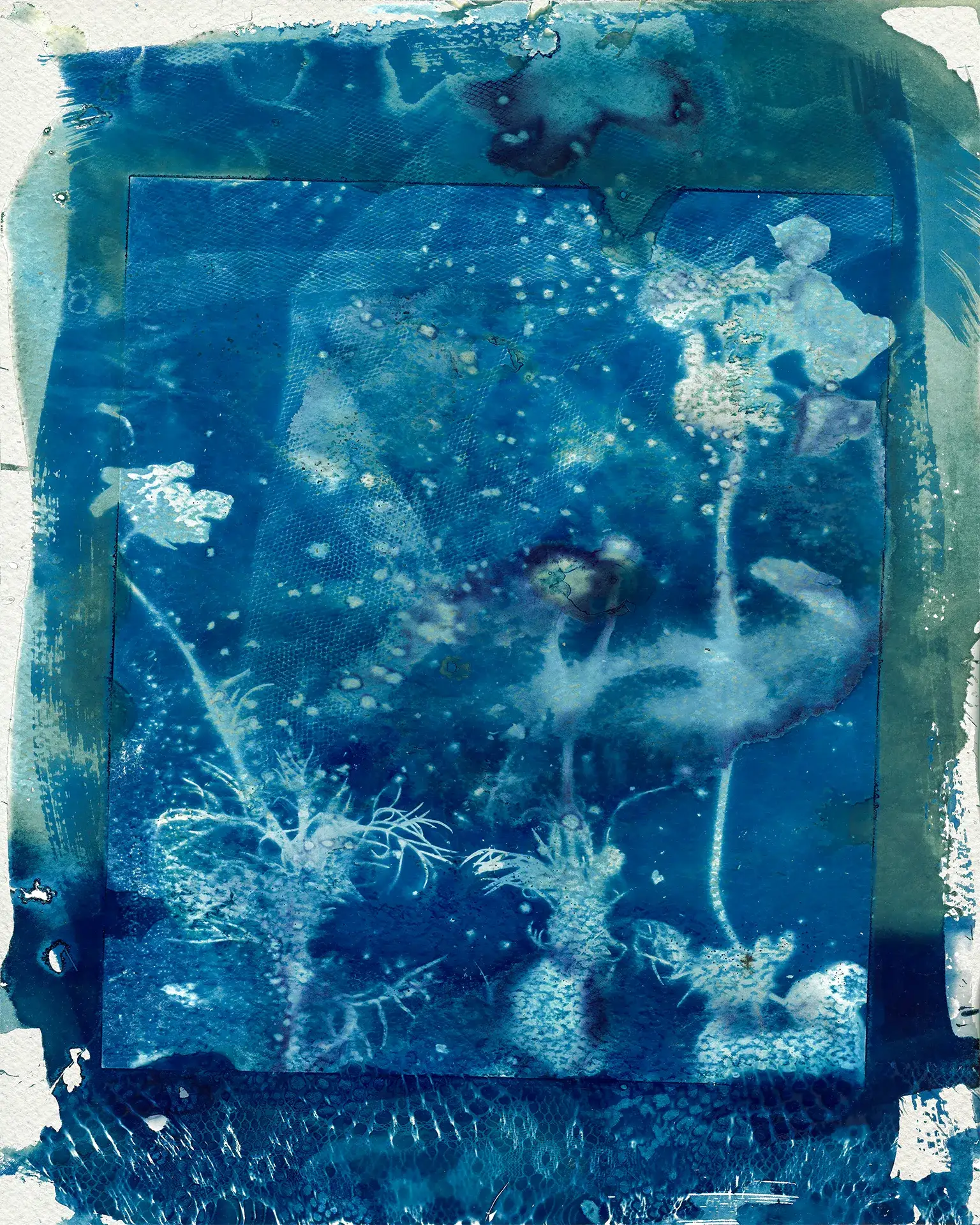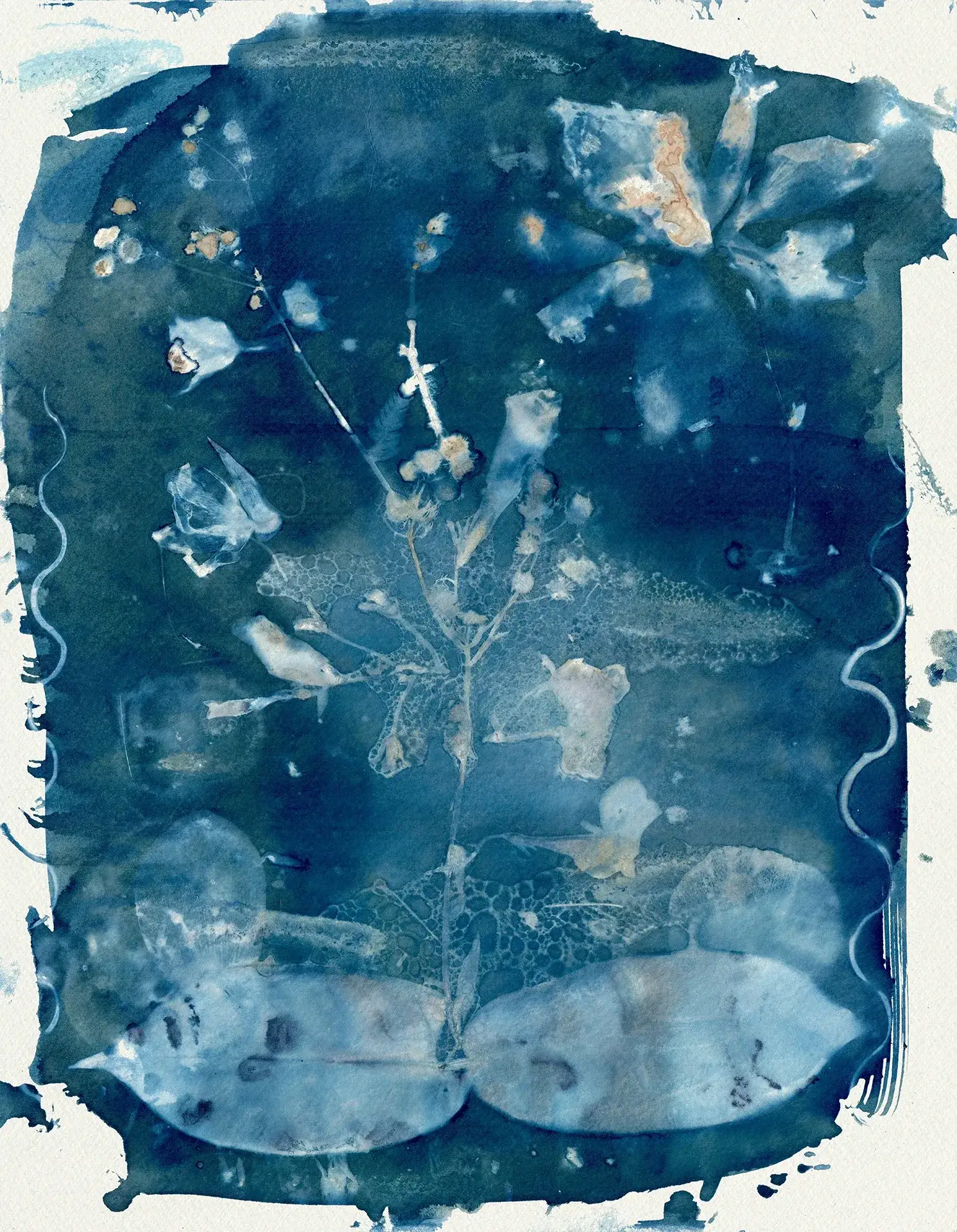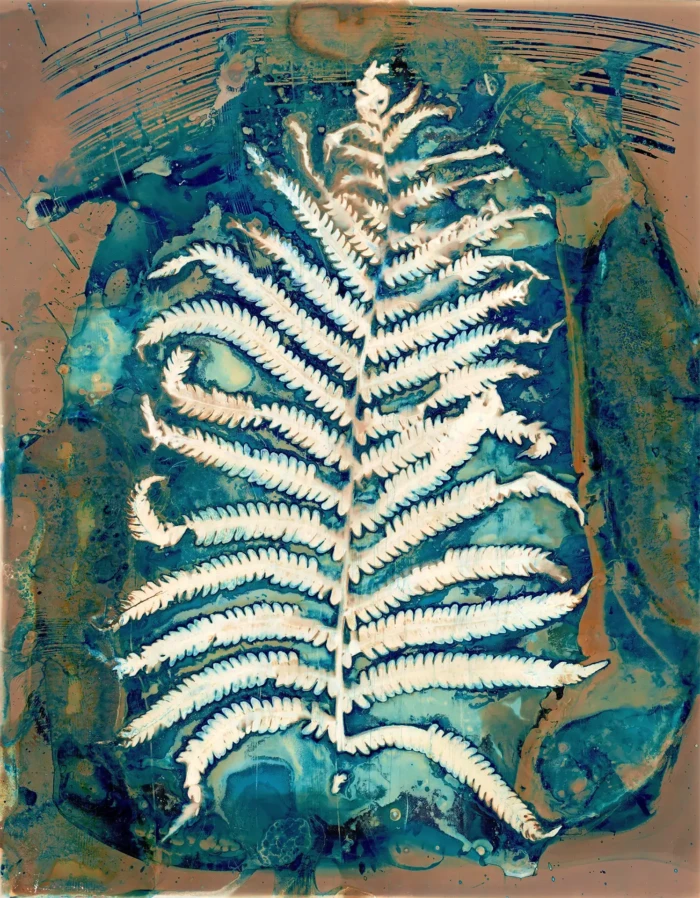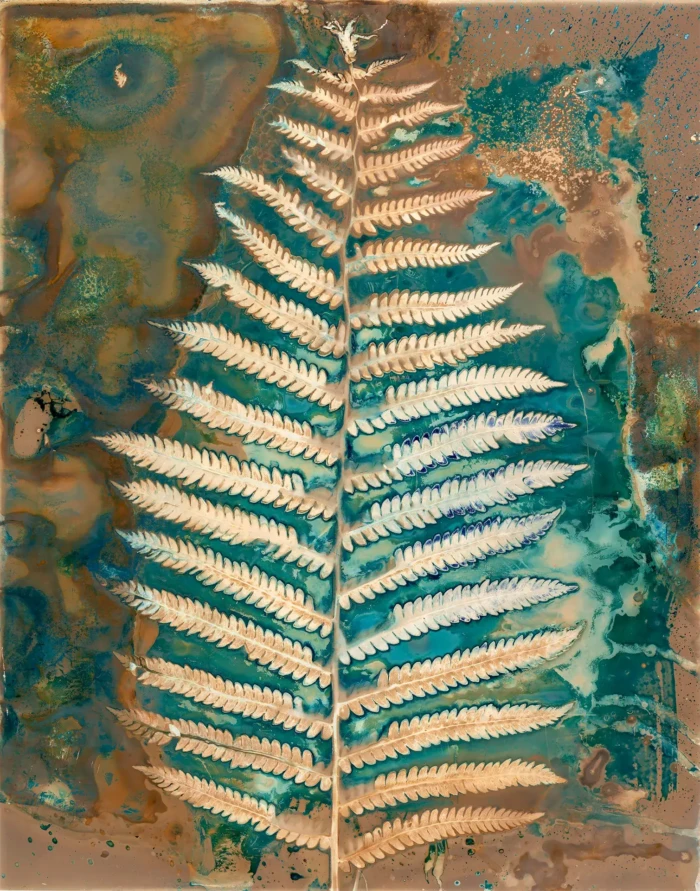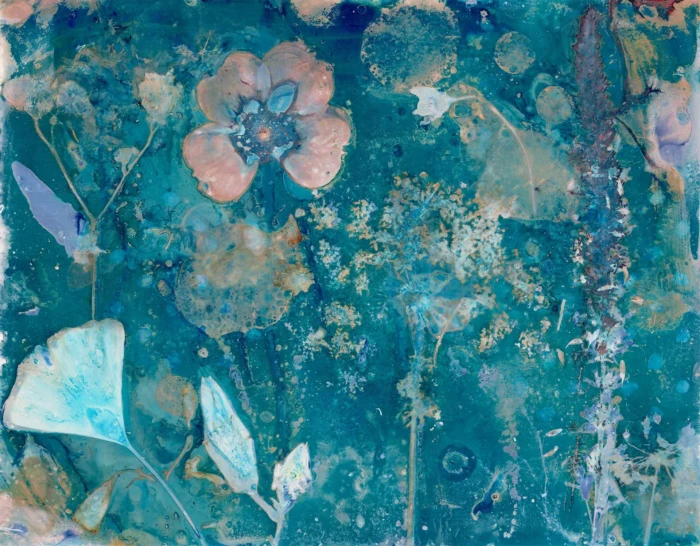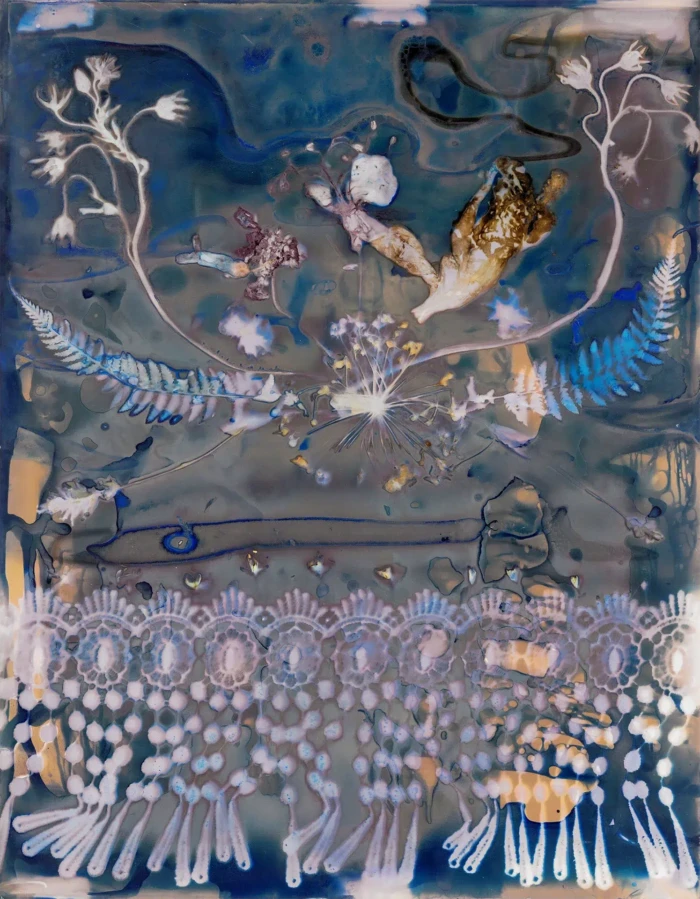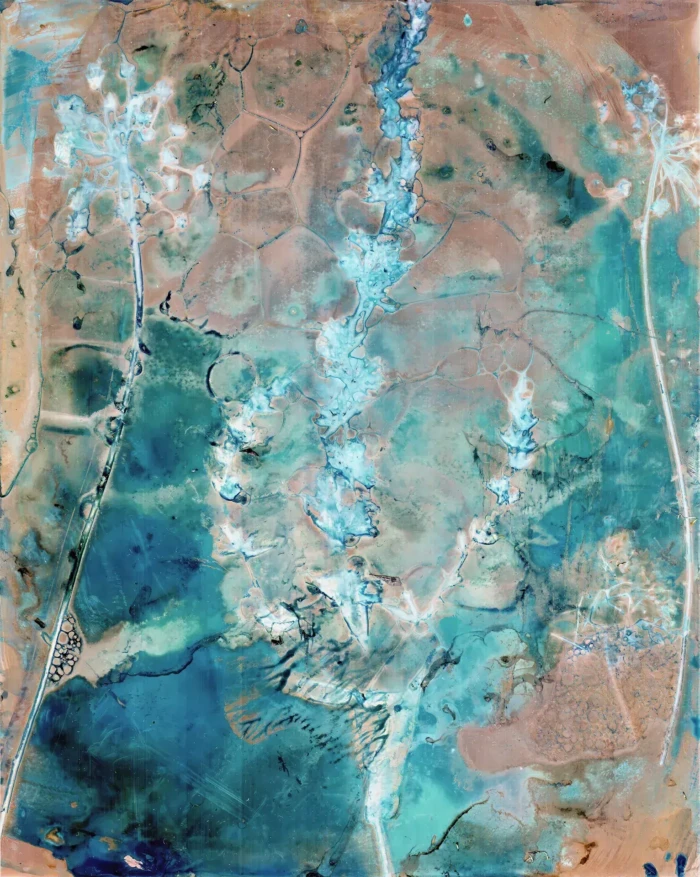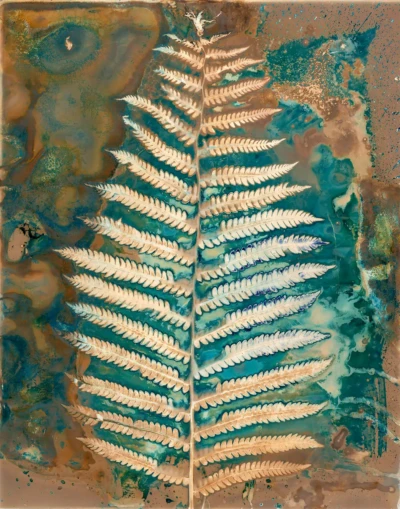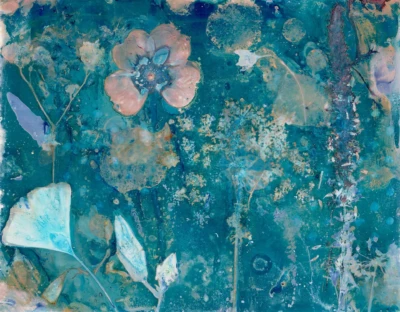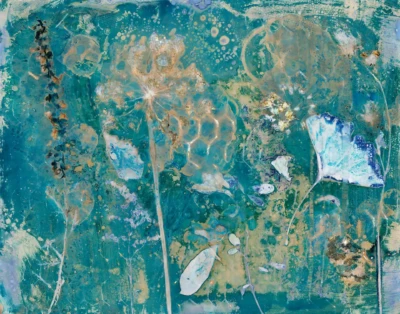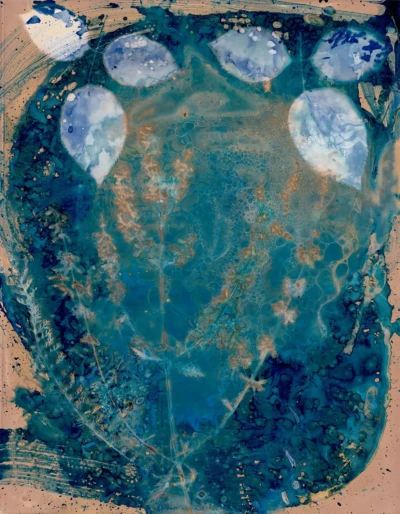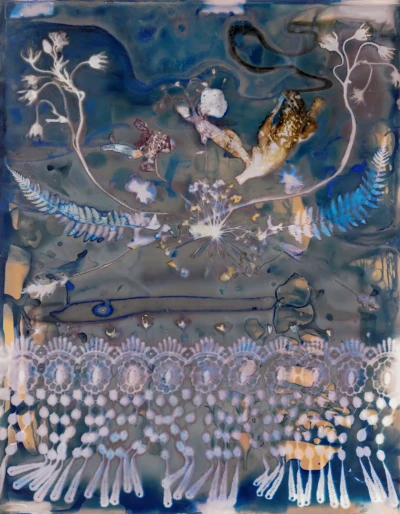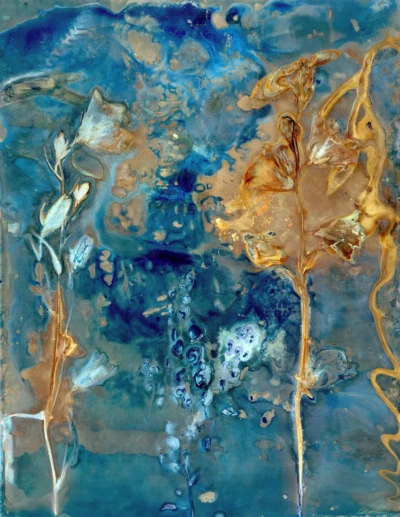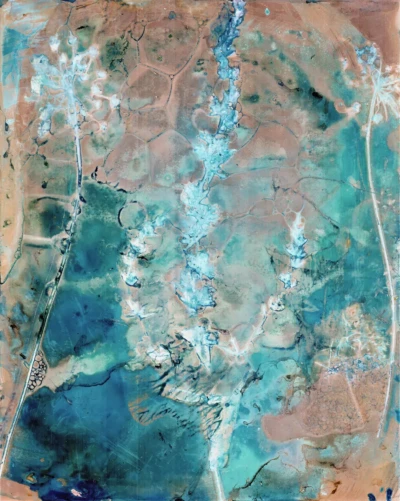Cyanotype
Inspiration
In the warmer months, I collect plants from forest preserves and nurseries to incorporate into my work. As a result, I turned to cyanotypes, a 19th-century camera-less photographic process, which uses UV light to create vibrant blue prints. Furthermore, I experiment by adding elements like water, bubbles, vinegar, and spices for unique effects.
Experimentation
To push the boundaries of the medium, I began creating cyanolumens by painting cyanotype solution onto light-sensitive photo paper. Manipulating the dual chemistries unveiled a wide range of colors and possibilities. Additionally, I incorporated film negatives into my prints to create multiple exposures and layered compositions.
Connection
This series captures the evolving nature of each print, embracing improvisation and experimentation. By exploring the interplay of nature, light, and process, I rediscovered joy and renewal in my artistic practice, which in turn recentered my focus on discovery and play.
In the warmer months, I collect plants from forest preserves and nurseries to incorporate into my work. As a result, I turned to cyanotypes, a 19th-century camera-less photographic process, which uses UV light to create vibrant blue prints. Furthermore, I experiment by adding elements like water, bubbles, vinegar, and spices for unique effects.
To push the boundaries of the medium, I began creating cyanolumens by painting cyanotype solution onto light-sensitive photo paper. Manipulating the dual chemistries unveiled a wide range of colors and possibilities. Additionally, I incorporated film negatives into my prints to create multiple exposures and layered compositions.
This series captures the evolving nature of each print, embracing improvisation and experimentation. By exploring the interplay of nature, light, and process, I rediscovered joy and renewal in my artistic practice, which in turn recentered my focus on discovery and play.
Once the exposure is complete, any masking materials are carefully removed from the surface of the paper. The image is immediately scanned in its pre-developed state.
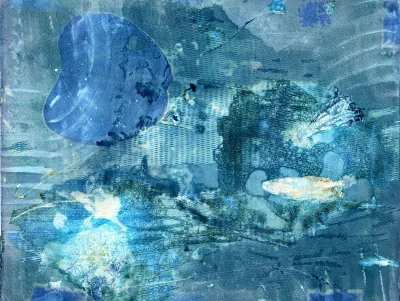
Next the print is developed in a water bath, where Prussian blue tones lighten and tranform into variations of turquoise. The print is blotted dry and scanned a second time.
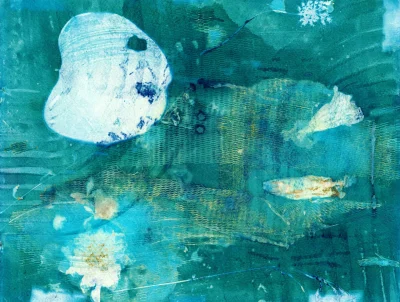
Then the print is hung to dry. The oxidation process takes up to 24 hours, during which time, the colors deepen to their final blue tones.
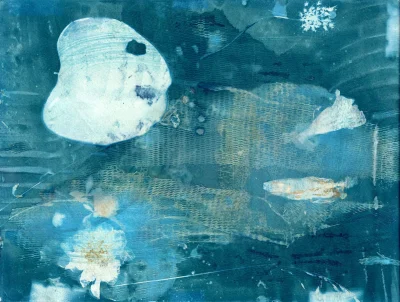
Prewash
Once the exposure is complete, any masking materials are carefully removed from the surface of the paper. The image is immediately scanned in its pre-developed state.
Postwash
Next the print is developed in a water bath, where Prussian blue tones lighten and tranform into variations of turquoise. The print is blotted dry and scanned a second time.
Final Print
Then the print is hung to dry. The oxidation process takes up to 24 hours, during which time, the colors deepen to their final blue tones.
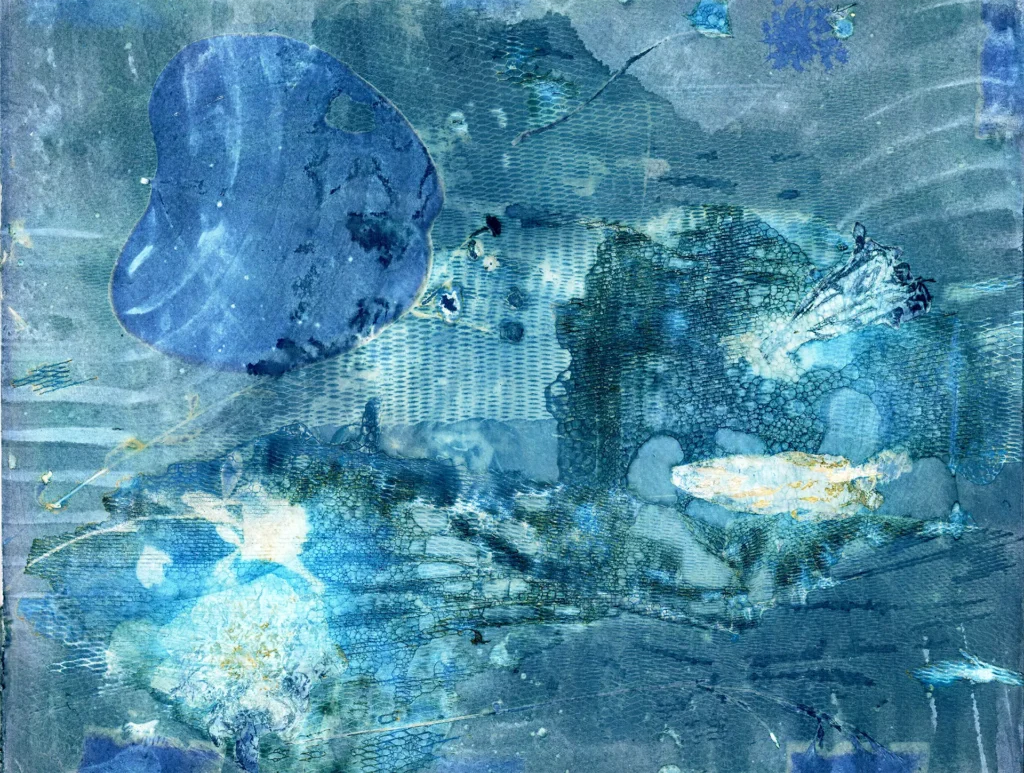
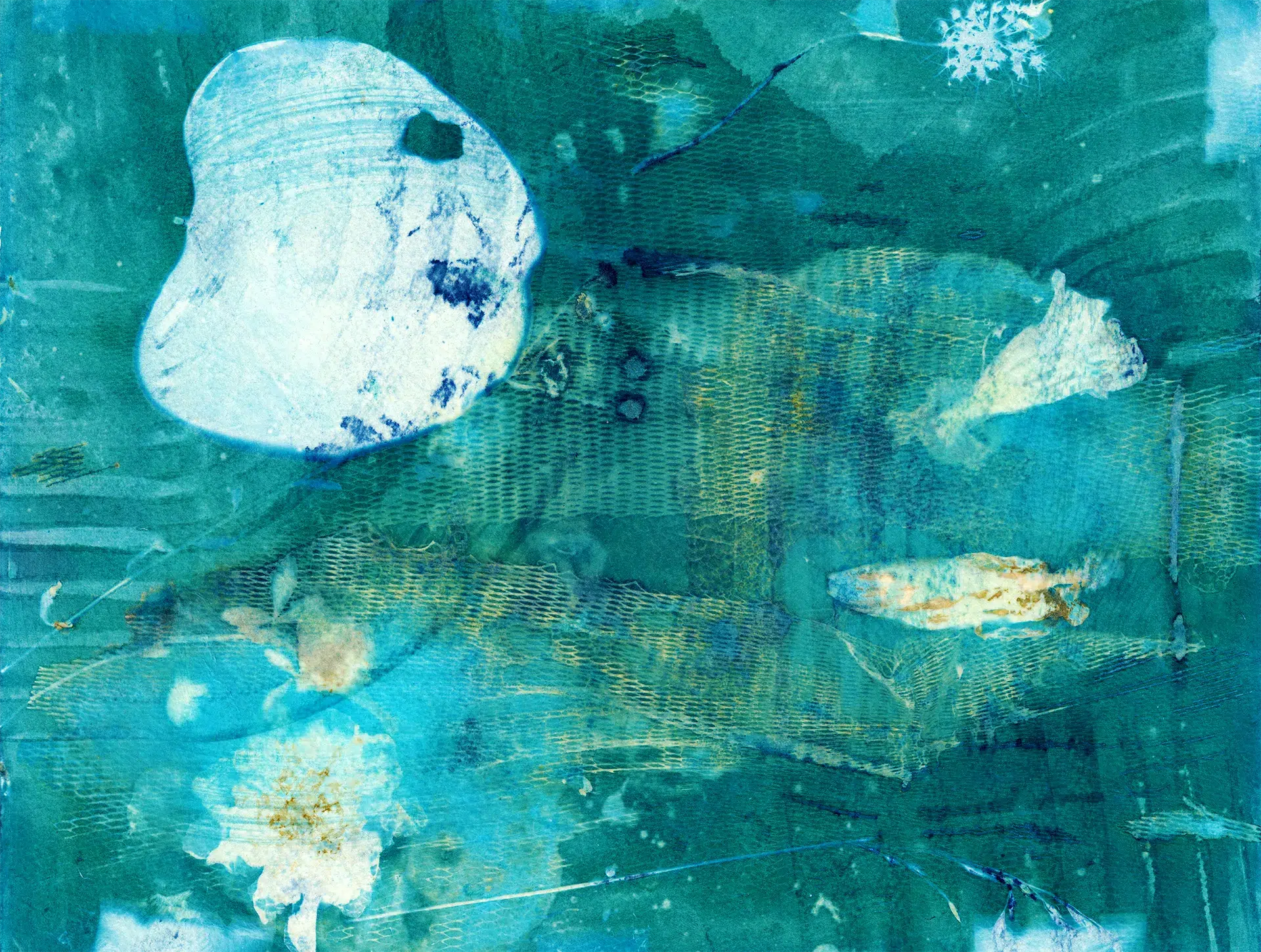

As an artist, I find inspiration in the minutiae of everyday life, constantly searching and collecting materials that inspire me. My work spans a diverse range of media, including drawing, photography, painting, embroidery, found objects, and digital art.
While each medium offers its own strengths, none fully satisfy me in isolation. Therefore, I combine traditional and contemporary techniques through collage to give materials new context and purpose. In doing so, I explore the beauty and layers of meaning found in the everyday objects around us.
My recent work reflects the intersection of family, place, and the systems that shape our identities. By incorporating family ephemera, I aim to honor and share our stories.
Ultimately, my work serves as a means to connect with the past, explore the struggles and triumphs of previous generations, and deepen my understanding of my own place in the world.
Prewash
Once the exposure is complete, any masking materials are carefully removed from the surface of the paper. The image is immediately scanned in its pre-developed state.
Postwash
Next the print is developed in a water bath, where Prussian blue tones lighten and tranform into variations of turquoise. The print is blotted dry and scanned a second time.
Final Print
Then the print is hung to dry. The oxidation process takes up to 24 hours, during which time, the colors deepen to their final blue tones.



In the Bouquets series, I use cyanotype prints to explore the emotional resonance of flowers in moments of joy, sorrow, and connection. Pressing wild plants, weeds, and flowers into the paper, I create unique floral bouquets. The resulting prints are infused with cyanotype chemistry and natural plant dyes. Each piece is titled after a different situation in which flowers are exchanged, reflecting the sentiments behind the gesture.
In the Bouquets series, I use cyanotype prints to explore the emotional resonance of flowers in moments of joy, sorrow, and connection. Pressing wild plants, weeds, and flowers into the paper, I create unique floral bouquets.
The resulting prints are infused with cyanotype chemistry and natural plant dyes. Each piece is titled after a different situation in which flowers are exchanged, reflecting the sentiments behind the gesture.
The Compositions series explores the intersection of photography and painting through cyanotype techniques. I paint cyanotype chemistry onto watercolor paper, incorporating natural materials, found items, and photo negatives. By manipulating the chemistry, I create atmospheric prints with multiple layers and exposures. Using washing soda to bleach and tone parts of the print, I can revisit my compositions and add new elements, resulting in unique textures and effects.
The Compositions series explores the intersection of photography and painting through cyanotype techniques. I paint cyanotype chemistry onto watercolor paper, incorporating natural materials, found items, and photo negatives.
By manipulating the chemistry, I create atmospheric prints with multiple layers and exposures. Using washing soda to bleach and tone parts of the print, I can revisit my compositions and add new elements, resulting in unique textures and effects.
In my Cyanolumen series, I further explore the fusion of painting and photography by applying cyanotype chemistry to expired light-sensitive photo paper. This interaction on the paper’s emulsion unlocks a wide spectrum of colors and effects in the prints. Developed in a makeshift darkroom, the cyanolumens evolve to reveal stunning tones, intricate details, and textures in a process that feels both magical and alchemical.
In my Cyanolumen series, I further explore the fusion of painting and photography by applying cyanotype chemistry to expired light-sensitive photo paper. This interaction on the paper’s emulsion unlocks a wide spectrum of colors and effects in the prints.
Developed in a makeshift darkroom, the cyanolumens evolve to reveal stunning tones, intricate details, and textures in a process that feels both magical and alchemical.

